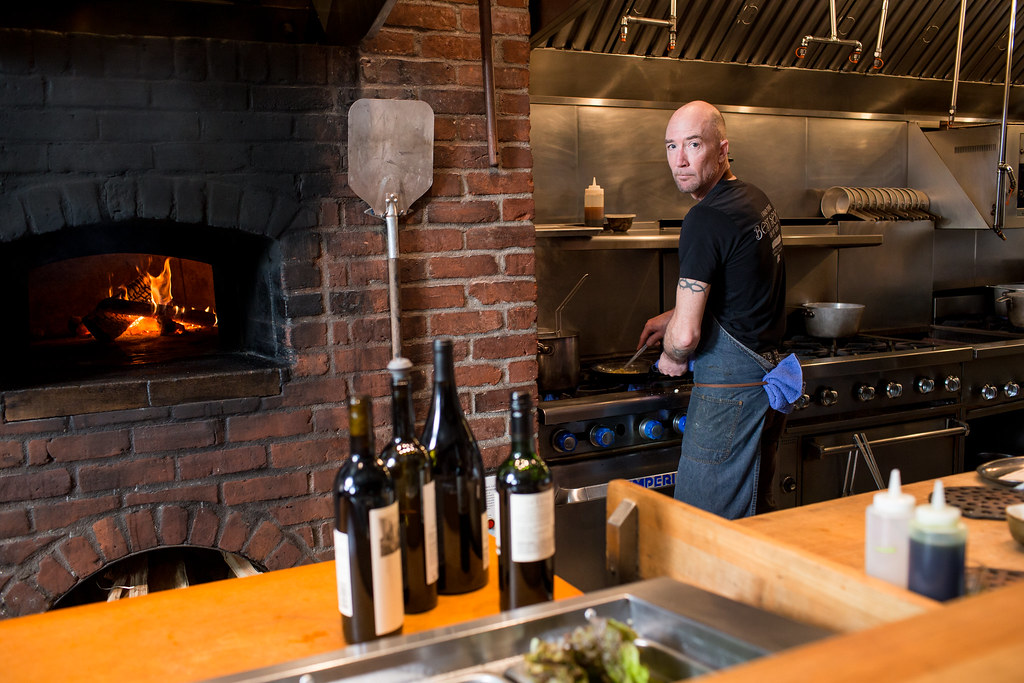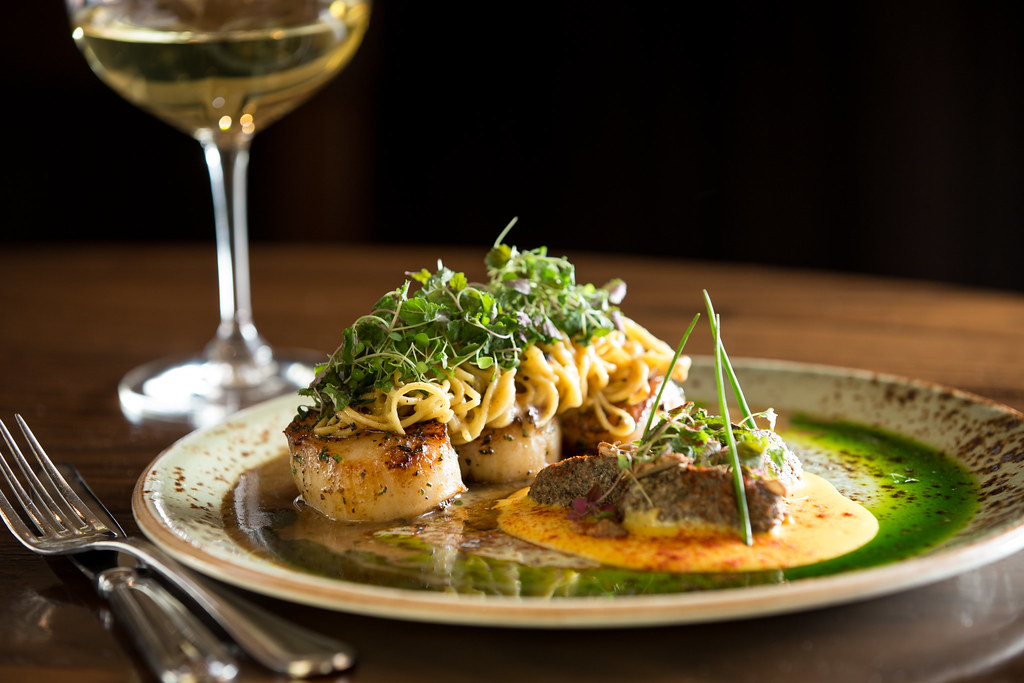How do you find food and wine matches made in flavor heaven? Ask the pros.
By Danielle Centoni
Pairing wine with food might seem like it involves some sort of complex equation, and only the “wine pros” can decipher the variables. But even though most of us don’t have a sommelier on speed dial at home, that doesn’t mean we can’t find our own way to the perfect bottle with dinner. DIY wine pairing can be a lot easier (and more fun) than one might think. The trick is to approach it like the chefs do: know the wine, aim for balance, and don’t be afraid to experiment.
“When I change the menu with, say, a new fish or pork dish, I think about the wines on our list,” says Daniel Mondok, executive chef at Raven & Rose in downtown Portland. “I like to think about what’s going to heighten your palate. But I try to make sure the food is balanced properly so it goes with the balance of the wine.”

Mondok has the advantage of knowing his wine list intimately, since he had a big hand in putting it together. For example, he knows that even though some of the winemakers on his list source the same grapes from the same regions, they can produce wines that are remarkably different. “One is way more masculine. And one is more feminine and pretty,” he says. “So I’ll ask myself: ‘Is the more masculine one going to go better, or the pretty one?’”
He also regularly meets with winemakers, just like he does with farmers, to taste through their offerings. “The Bergströms—the whole family—will show up and taste us on their wines. But first they come and dine. It’s a relationship.”
While most of us aren’t lucky enough to have winemakers knocking on our doors with samples, we can still take a page from Mondok’s playbook. Build your own wine collection mindfully. Visit tasting rooms and ask questions about the wines from the source. You’ll get excited about the wines, not intimidated. And keep your tasting notes in a journal. When it’s time to pair a dish with something in your collection it’ll be that much easier.

At Peerless Restaurant in Ashland, Executive Chef David Taub and Chef de Cuisine Harlan Brooks frequently host special wine-pairing dinners showcasing a specific Southern Oregon winery. And when they do, they don’t even think about the menu until they’ve tried the wines.
“It’s such an important part of the process,” says Brooks. “We delve into the flavors of the wine and take as many notes as possible. What’s special about this wine? What can we highlight with our cooking? You want to think of the wine as an ingredient of the overall flavor of what you’re trying to accomplish.”
With dozens of varieties grown in Southern Oregon, the chefs find it easy to come up with dishes that pair beautifully with one of the selections on Peerless’s Oregon list. “We feel very fortunate to have such a wide variety of wines,” says Taub. “When it comes to pairing with local wine, we don’t get tied down.”
Still, they do have their go-to wines. “I love Syrah because it goes so well with lamb,” says Taub. “And I like to do a lot of dishes with Umpqua lamb. As a fruity red, Syrah opens up a lot of opportunities when it comes to the other components of the dish.”
Brooks loves pairing with Viognier. “It’s a white wine that’s not too sweet and not too dry, and a lot of notes that come out are almost tropical,” he says. “I enjoy it for early summer pairings, when the weather is warm.”
Clearly it’s all a matter of personal preference. Mondok, for example, is a Chenin Blanc guy. “I love it with food,” he says, “because it’s so perfectly balanced. It has the residual sugar and the acidity and it has a beautiful butter texture.”
Jason Stoller Smith, executive chef at Timberline Lodge on Mount Hood, says when in doubt, reach for a Pinot—noir or blanc. “Pinot noir has such a broad spectrum of flavors and it goes great with a lot of different things,” he says. “And Pinot blanc is great because it’s acidic and fruity. It’s like a neutral palate with different types of foods.”
If you’re still fretting about a pairing, particularly if you’re hosting a guest you’d like to impress, give the wine a test run. “Just try the wine with a little element of the dish. Then try the wine again and see what it does on your palate,” says Stoller Smith. “There are all kinds of things that go well and things that don’t. Play around and experiment with it.”
In the end, Stoller Smith says, there’s nothing that’s off limits. “It’s about finding that one element that works. But that’s part of the fun. There’s a whole world of wine out there to try.”



